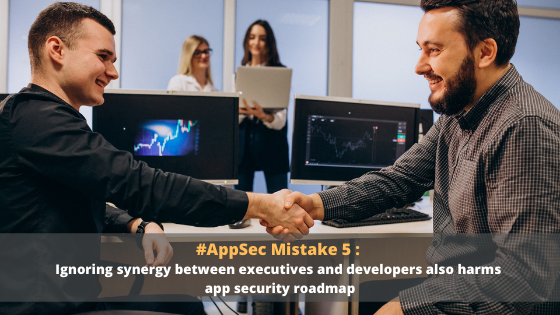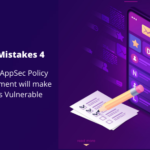Contrary to common understanding, app security (AppSec) initiatives are much more than using just tools and techniques to protect enterprise products and brand image from security threats. It is also about convincing executives and developers about the need for adopting best security practices as a part of development methodology and making efforts to imbibe them as a part of the culture. This buy-in is essential to implement AppSec initiatives in a sustainable and effective manner.
Getting both these groups on board during the planning stage itself will prevent you from implementation hassles later on, lest you realize that the program has stalled even before launch. Since AppSec comes at a cost, executives need the realization of how well-crafted and appropriate initiatives could go a long way in benefiting the company effectively.
Why the View of Development Team Matters
Taking developers into confidence throughout the security life cycle usually helps. Brainstorming with developers using aids like questions, checklists, focused discussions, and interviews go a long way in ensuring a workable AppSec policy. The output could include a need assessment report about AppSec initiatives to see how they fit in the overall scheme of secure code development.
Before suggesting AppSec initiatives, it helps to assess and visualize the priorities of the development team to embed security into the development workflow seamlessly. A comprehensive hands-on training program to train the development and testing team could be a good starting point to adopt best practices.
Conducting cost-benefit analysis of existing scenario versus secure development life cycle will help in better realization of a robust AppSec requirement. The value security incorporates into the software development life cycle should be clearly thought through and communicated.
Get to know the development team’s concerns to achieve a sustainable buy-in. Understanding their concerns and addressing them as part of the proposed AppSec initiatives would markedly improve the chances of acceptance among the development team.
In consultation with all stakeholders, prepare a security road map and map the identified security elements into the overall development process. The road map helps everybody visualize the overarching security framework rather than getting lost in the micro details.
The world over the power of automation tools to streamline DevOps workflow is very well known. Illustrate to developers how rigorous development-testing workflows result in secure products and circumvent any eventuality of zero-day attacks.
Obtaining Executive Buy-In
Once you have got the development team on your side, it is time for convincing the executives.
There are two types of companies – those which have experience in security events and those which do not realize them. Letting executives know this hard truth presents them with a much-needed perspective on security. Ultimately, evolving an appropriate security framework is not a one-time exercise, but several building blocks put together.
The company can make the following policies to argue for a strong AppSec approach:
- Develop a business case around how AppSec initiatives can benefit the organization. Illustrate the benefits of AppSec using cost-benefit analysis and trend analysis. By tying AppSec to corporate goals and priorities, you have a better chance of getting the executive go-ahead, especially in times of critical tech-budget outlays.
- Presenting case studies from other organizations to reinforce the importance of AppSec can help demonstrate how it helped them in building positive outcomes. Better enough, security events from your organization and its repercussions could serve the purpose of convincing the executives in arriving at a consolidated organizational view and push towards adopting enterprise-level solutions.
- Convince the management about the power of adopting a proactive approach in building security into the product using a robust security road map, rather than engaging in firefighting when an actual security breach happens. It is better to have some security measures in place than not having anything at all!
- Synchronize security with business variables. Analyze and present how security threats may impact variables, such as product delivery timelines, business value creation, brand value, risks from unattended vulnerabilities, and stakeholder satisfaction. Communicating the selling points that really matter to the audience is crucial to close the debate on the need for AppSec.
- Present the advantages of investing in focused AppSec initiatives, vis-a-vis generalized cybersecurity programs. Alternatively, to quantify the impact for better visibility, you could put to use dashboards and reports to present the current picture and the progress made in the future on critical performance parameters over time.
AppSealing has made a name for itself in the world of security solutions providers in a short span. Its wide-ranging clientele is testimony to its experience and impact in this field. Using its real-time attack handling dashboard, companies can detect vulnerabilities in their AppSec approaches and fine-tune them to secure themselves against emerging and existing threats.






